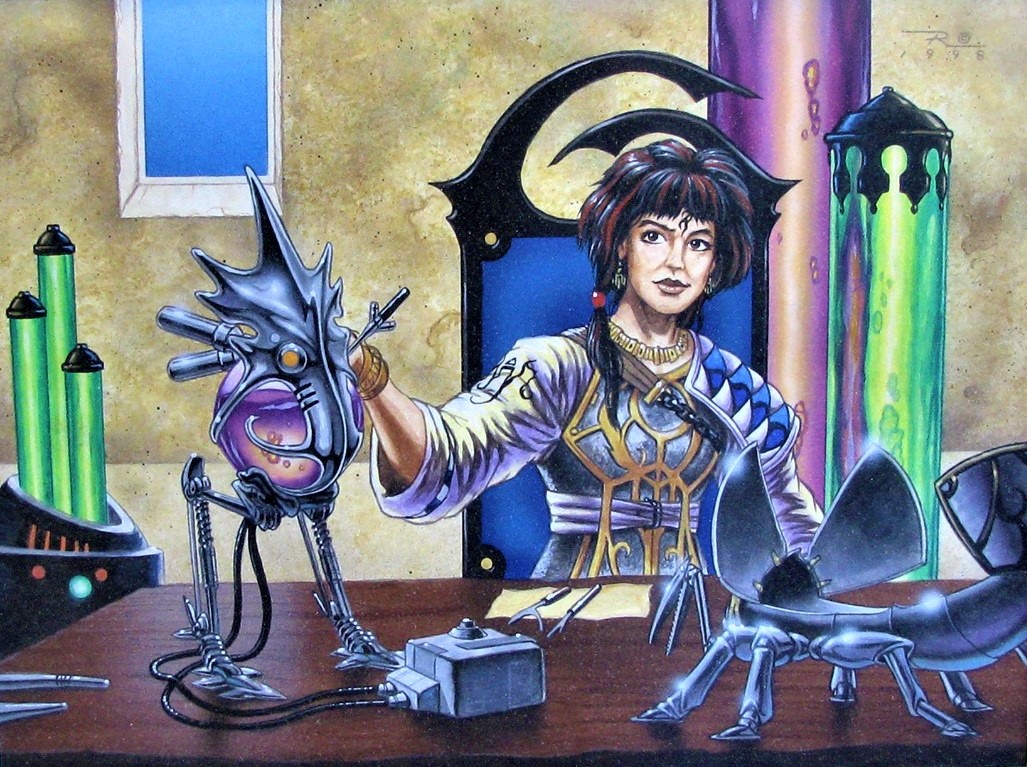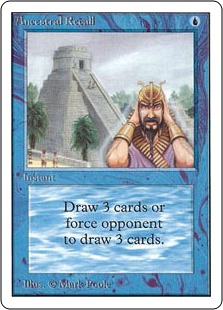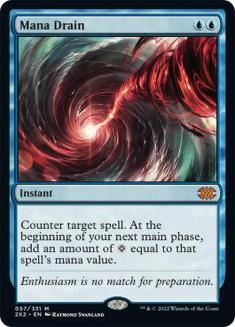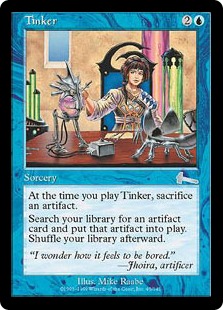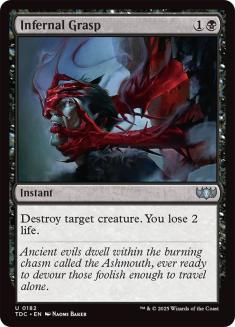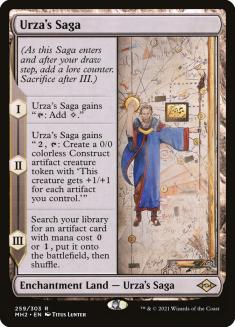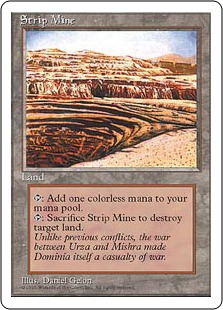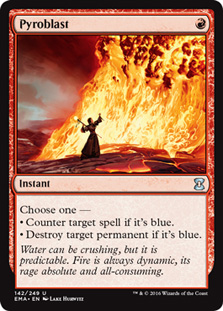Merry Cubemas, gamers! If you’re unfamiliar with Cubemas, this refers to the time when Vintage Cube is available on Magic Online (MTGO). At least, that’s what I’m saying it means. And it just happens that Cubemas is going on for three more weeks, so if you’re just hearing about it, there’s still plenty of time to celebrate!
While the Cube is live, I’ve decided to churn out some Deep Dives on popular archetypes available in Vintage Cube to offer some insights on drafting what is undeniably the most-drafted Cube in all of Magic. Today, I’m going to break down what I believe to be the most powerful archetype in Vintage Cube, and one that typically doesn’t show up in too many other Cube environments. Today I’ll be breaking down what I call Broken Blue.
What Is Broken Blue?
The defining feature of Broken Blue is trying to play as many of the most powerful cards in the Cube, and by extension the most powerful cards in Magic, as possible. The archetype is base-blue by necessity because the nonartifact spells in the Power 9 are all blue, and cards like Mana Drain and Tinker check all the right boxes as well.
Additionally, powerful card selection in the form of cards like Ponder and Preordain is among the easiest and most available ways to give these decks higher access to these powerful spells. Drafting these decks offers a lot of flexibility in how you actually win games, as having access to these powerful spells along with counterspells will put the onus on your opponent to figure out how to win, as the power level of your average draw far surpasses theirs.
“Supreme” Examples
I actually have a lot of great examples of this archetype from my successful Supreme Draft trophy leader season earlier this year. Some readers may scoff at these lists coming from Supreme Draft, but I’ll explain why the skeleton here is still useful to study. The last run of Supreme Draft didn’t generate multiples, so while you would get more pieces of power than you can reasonably expect, the support spells when power is unavailable are consistent across my 25 trophy lists.
The fact that these drafts were singleton also serves as evidence that these are the sorts of decks that you would draft in a traditional Vintage Cube Draft if things went perfectly for you. Three Moxen is a pipe dream, but Urza, Lord High Artificer; Cryptic Command; and Mystic Confluence are much easier to track down. See my thread of my decks from that season here:
Broken Blue: A Recent Result
Just for reference, here’s a list from my first draft/trophy with the current list of the Cube. Fractured Identity pushed me into white, with Balance and Elspeth, Sun’s Champion offering some power there as well, though the powerful blue spells, artifacts, lands, and Ugin, the Spirit Dragon ran the show:
Creatures (5)
Planeswalkers (3)
Lands (16)
Spells (16)

Broken Blue as an archetype is more loosely defined than many other archetypes, but it is a composition of specific elements. Those are fast mana, card advantage spells, counterspells, and haymaker spells that impact the battlefield. Mana sinks fit very well into this shell, particularly if you can use them at instant speed, so cards like Retrofitter Foundry and Walking Ballista are also right at home here.
How Should I Approach Drafting Broken Blue?
There are some Cube decks that you can approach from a distance, picking up filler cards in the hopes that quality cards for that archetype will come your way or that you’ll get something powerful on volume. Broken Blue isn’t one of those decks. You can first-pick a Thraben Inspector and walk your way to Mono-White Aggro, but you really need to pick up powerful blue spells and artifacts early and often to make Broken Blue work. I’ll first-pick a Signet or Ponder more readily than most, but it’s a rare treat that somebody passes you a Mana Drain to solidify your lane. Miracles do happen, though.
The first step to drafting Broken Blue tends to be opening power or something like a Jace, the Mind Sculptor that is convincingly the best card in the pack. The second step is a little out of your control and involves powerful artifacts, blue cards, and lands coming down the stream. What is under your control is drafting in a way to allow the best cards for the archetype to come your way.
“Staying Open” While Having a Plan
You’ll often see players draft colorless spells to “stay open,” but I actually advocate drafting artifacts out of packs without powerful blue options while drafting Broken Blue to stay blue. One of the most significant tips I can give about drafting Broken Blue is that an off-color Signet will do more for your deck on average than an off-color spell. You won’t always want to play Infernal Grasp, but an off-color Signet will always accelerate you towards casting your most expensive spells or serve as Tinker fodder.
Looking out for cards like Metalworker and Kuldotha Forgemaster allows you to take the best blue cards out of every other pack, while scooping up some powerhouses that other drafts won’t necessarily want as they search for mana-fixing and powerful spells in other colors. These cards will also charge up Tolarian Academy, which is a high pick and one of the most powerful cards to look out for while drafting Broken Blue. Drafting these cards will also make you the most likely drafter to end up with Cryptic Command if it’s opened as other players figure out other colors to draft. If you’re really lucky and carve out your lane well enough, you’ll even get cards like Counterspell passed to you late!
Mono-Blue or Splash?
I try to be mono-blue if I can help it when I’m drafting Broken Blue, but you’ll want to keep an eye out for cards like Fractured Identity and Oko, Thief of Crowns for reasons to go into other colors. You know, the most powerful spells in the Cube. Beyond that, I’ll keep an eye out for blue duals that are going late in the draft. I won’t pick a Volcanic Island over Counterspell, but if one comes late, it’s good to have some fixing to help ensure that you have enough playables.
With blue being clearly the most powerful color in the Cube, you’ll almost never find that you’re the only blue drafter, and as such you typically don’t end up with a lot of relevant cards in your sideboard while drafting Broken Blue. Even still, powerful colorless lands are more desirable for the archetype than something like a Triome. Having really powerful effects in the lands section is actually among Broken Blue’s fundamental strengths over archetypes that have to value mana-fixing more highly.
The Win Condition Trap
One of the biggest mistakes you can make while drafting Broken Blue is valuing win conditions too highly. A card like Bribery that fluctuates wildly in power level and doesn’t necessarily interact with your opponent’s battlefield or the stack is going to be much less desirable than a card like Mana Leak or Preordain. We want Venser, Shaper Savant, not Splinter Twin. I’ve trophied plenty of drafts where the A-plan was to Upheaval with a little mana floating and disrupt the opponent while I crossed the finished line with meager beatdowns from a small selection of one- and two-power creatures.
How Fun Is Broken Blue?
For my money, I love drafting Broken Blue. I did like a billion Supreme Drafts because it was one of the few decks you could realistically draft! You have to have a high tolerance for nonsense and huge swingy plays, but Broken Blue is what Vintage Cube is all about for me. So much so that I curated the Grixis Twobert to be all about drafting various shades of Broken Blue!
On the other side of things, I would not categorize Broken Blue as being the most fun deck to play against. It tries to monopolize game actions while countering or stealing all of your best spells. Realistically, the most fun matches with and against Broken Blue are sort of mirror matches, which is why I loved Supreme Draft and why I point to the Grixis Twobert as a fun environment for the archetype.
How Do I Support Broken Blue as a Cube Designer?
Today’s article mostly highlights how to draft Broken Blue while Vintage Cube is live on MTGO, but I’ll go over the usual Deep Dive structure. Some of this information helps to describe what makes the deck tick in Vintage Cube, if nothing else.
Broken Blue as a rule will be undesirable to support in the average Cube. It suggests a wide power band, and specifically the most powerful cards in the Cube being consolidated in one color. All that stuff usually indicates an underdeveloped Cube! Vintage Cube of course leans into these principles, and even imbalances the number of cards in each color to feature a higher percentage of blue cards as well as a great volume of colorless options to assist players in being able to draft and play with the blue cards as often as possible.
If you want to really get into the weeds on facilitating Broken Blue, you’ll probably want to spend some time thinking about creative ways to explore a color imbalance, like intriguing one-for-one hosers like Pyroblast or a disparity in dual land distribution like what we saw in MenguCube. Color restrictions like you see in Grixis Cube also go a long way in supporting the archetype. I’ve even seen fully mono-blue Cubes! Broken Blue can show up in environments like Legacy Cubes too, but mostly you’ll see it in very high power environments, and studying Vintage Cube lists will give you the best insights on facilitating the archetype.
True Blue
Broken Blue is convincingly the most powerful macro-archetype in the MTGO Vintage Cube, and is among the most powerful archetypes that a Cube could theoretically support. I’m tipping my hand a little in sharing my approach to drafting the archetype, because as things currently stand, I see entirely too many late Mystic Confluences, Tezzeret the Seekers, and Library of Alexandrias (the most underrated card in Vintage Cube). Broken Blue isn’t the kind of archetype that you can just choose to force in the average draft, but knowing how to approach drafting it will result in the most powerful decks that you’ve ever drafted when the lane is open. Good luck, and have fun.

